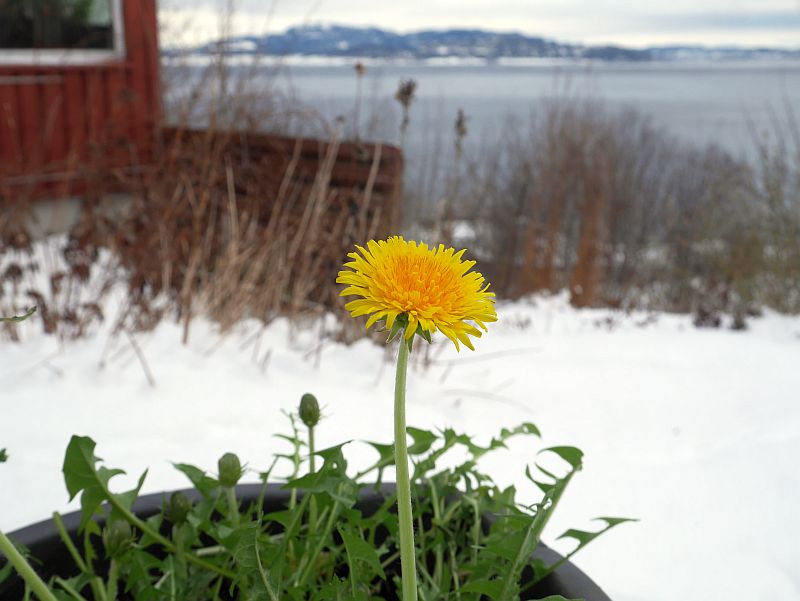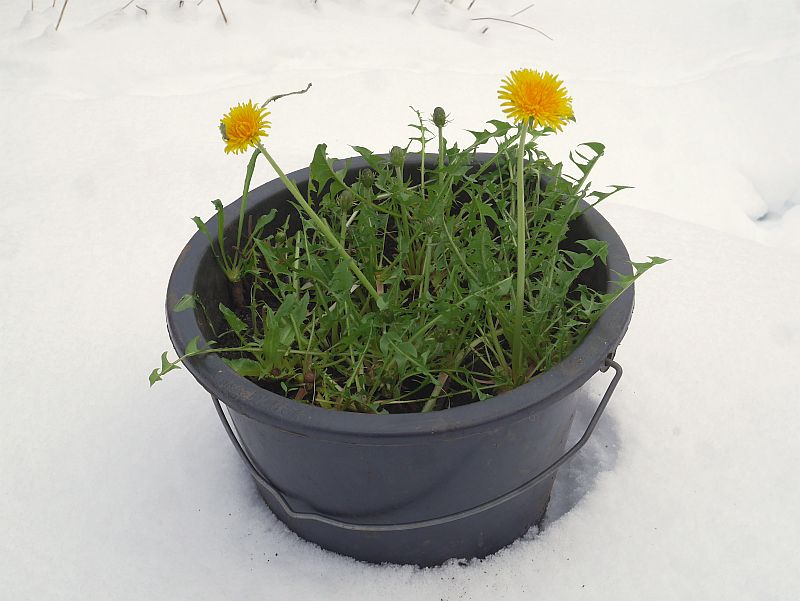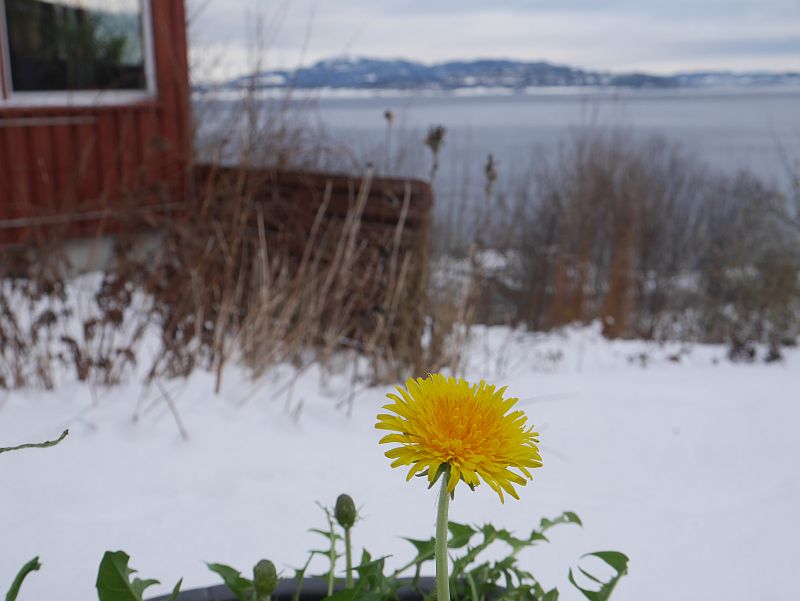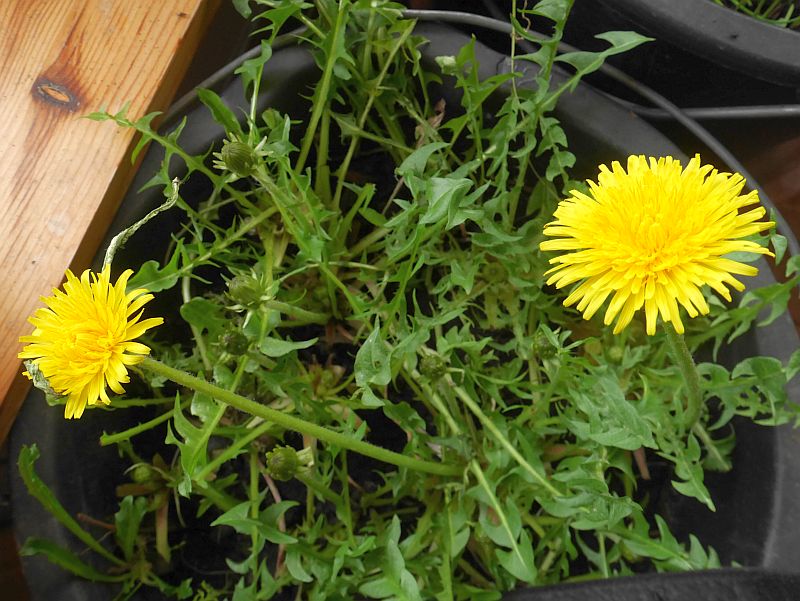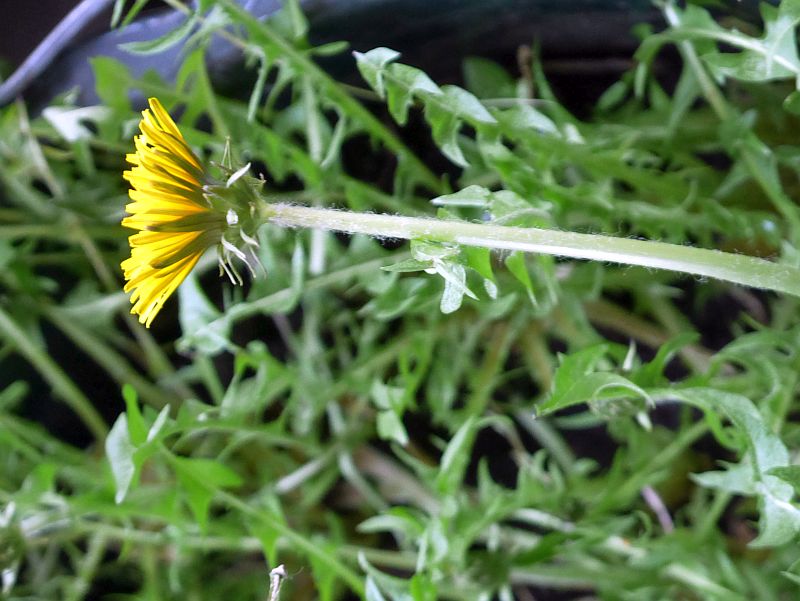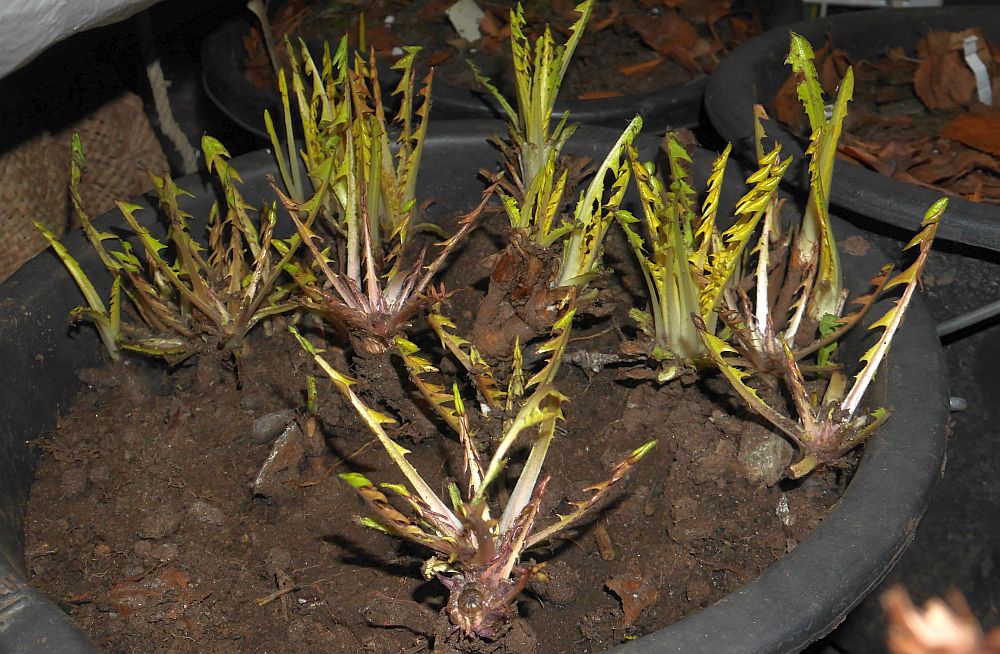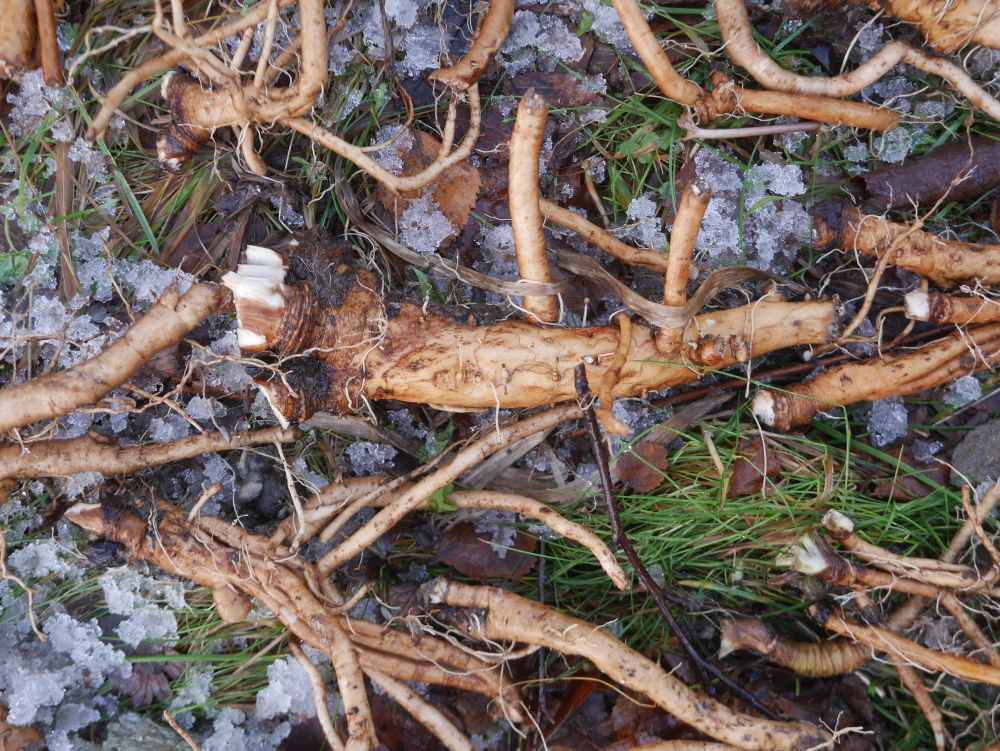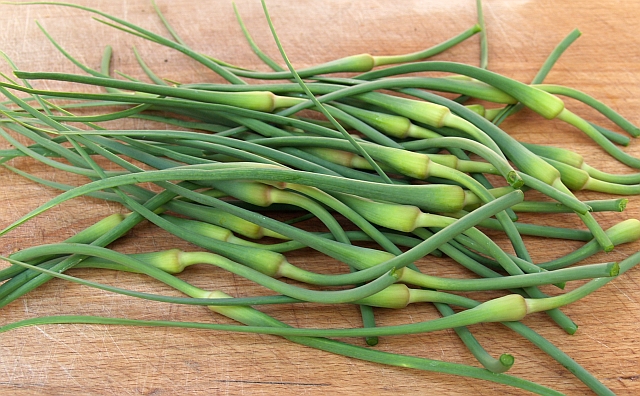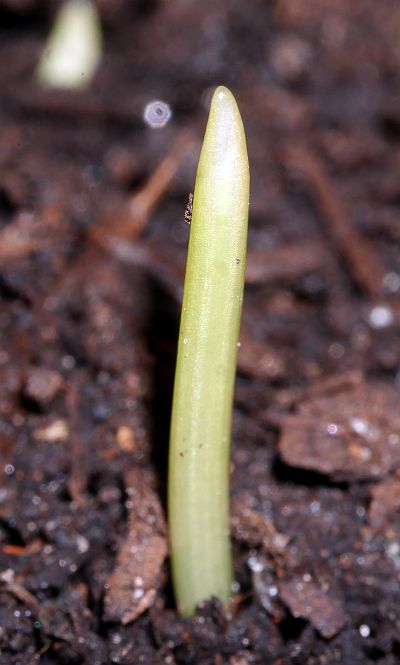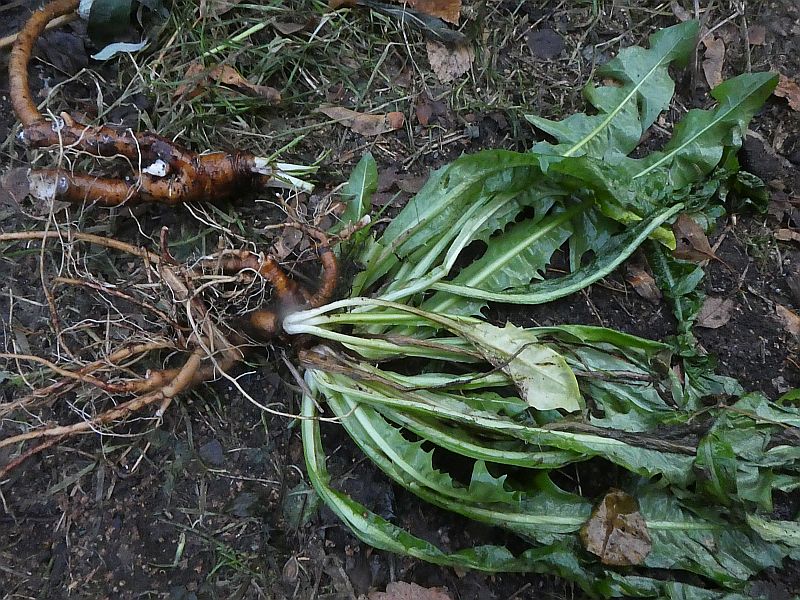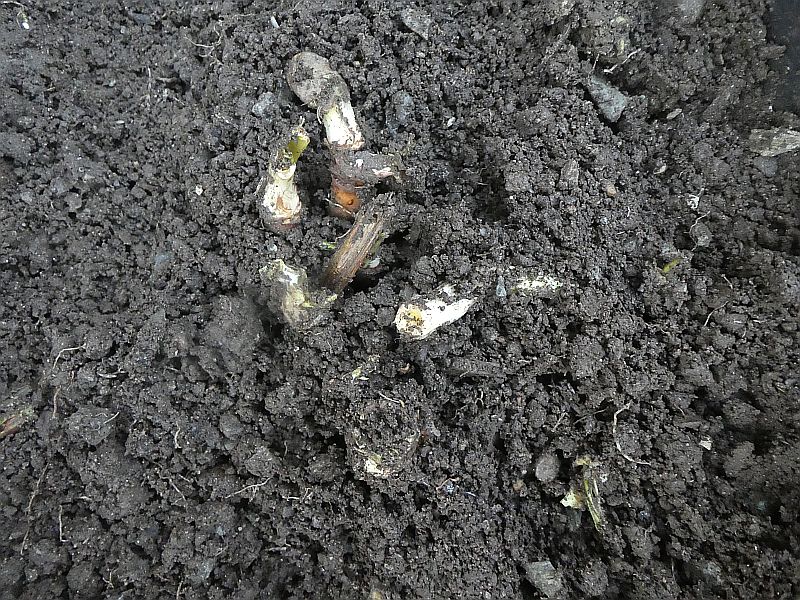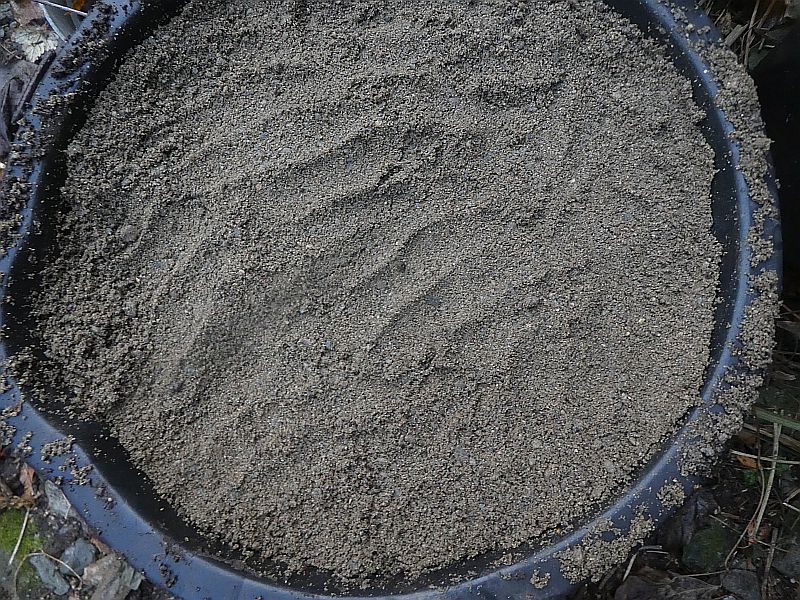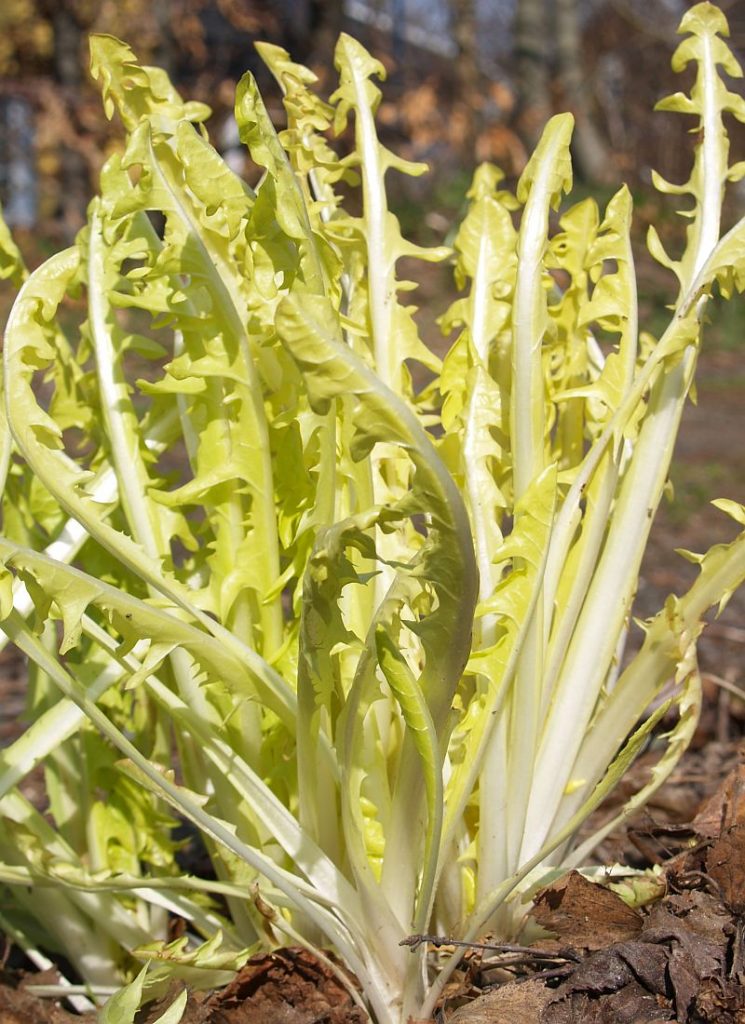I was showing a journalist around the winter edible garden and cellar this morning and dug up some nodding (Chicago) onions (Allium cernuum) and picked a few Hablitzia shoots, so why not turn it into lunch! I sliced an oca (Oxalis tuberosa) in with the vegetables. Scambled Habby Chicago eggs is simple gourmet midwinter food from garden to table in no time!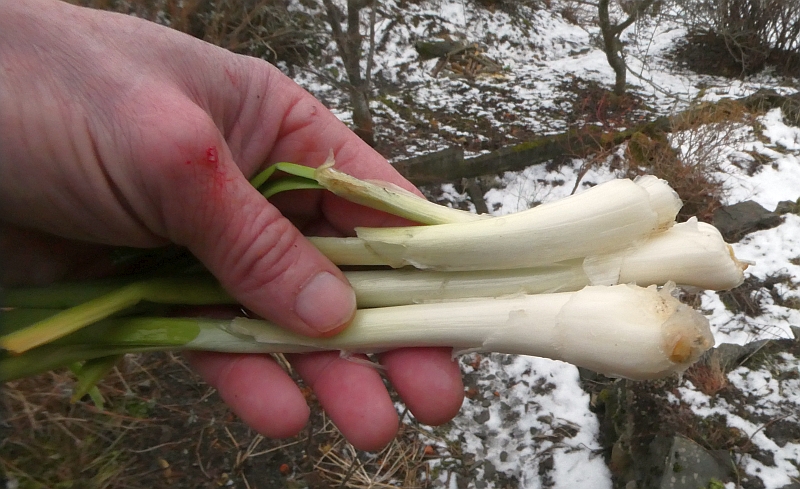
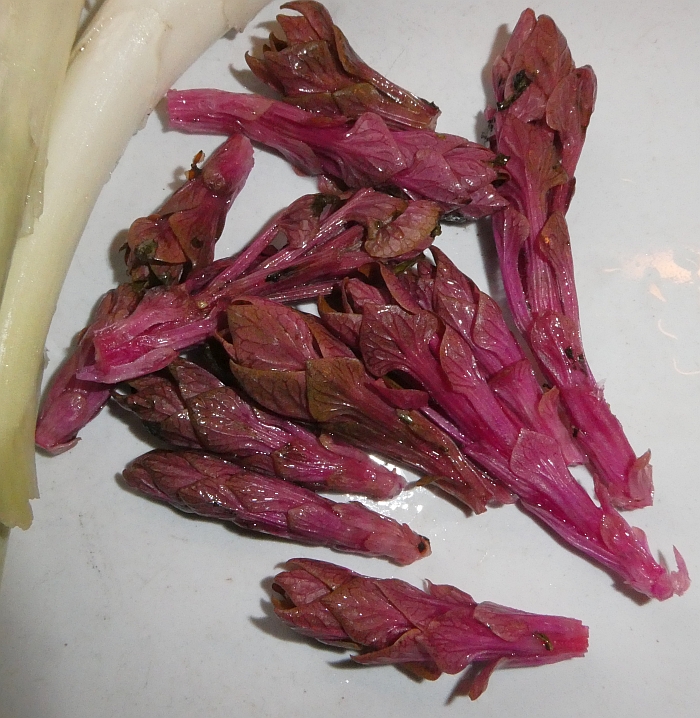
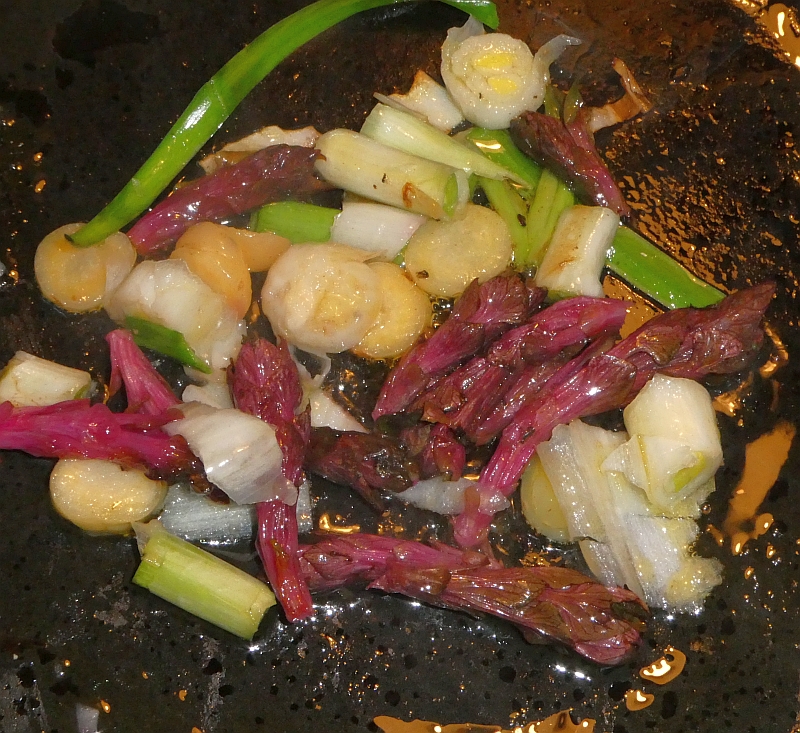

Category Archives: Winter shoots
Macrogreens and the first Dandelion Flowers
MACROGREENS
I harvested dandelion roots in November and stored them in the cellar until mid-January when we moved it into the living room and the first leaves were harvested just a few days later: https://www.edimentals.com/blog/?p=27183
Since then, we’ve been eating a few leaves for lunch every day.
A few days ago, the first flowers appeared and I took my pet dande-lion for a walk in the garden.
In the cellar, even though it’s only +3C they’ve also been sprouting…
Winter garlic shoots 2020-2021
I started this week sprouting the first garlic bulbils of the winter. Of the garlic varieties I grow, Aleksandra, Estonian Red and Valdres are all very similar (I suspect they may be the same) have the perfect size and number of bulbils for sprouting. I counted 90 bulbils on one typical head this evening. They are planted on ordinary garden soil (picture) and covered with a few cm of sterile soil so that seeds in the soil don’t quickly appear. The pot is put in a kitchen window to sprout and the shoots can be harvested two or three times before they give up.
Some people remove the scapes (flower stems) of hard neck garlic in summer to get a better yield. I have compared the size of garlic on plants with and without removing the scapes and found little or no difference here. I therefore leave the bulbils to develop on most of my plants. For me it maybe adds maybe 50% to the value of the plants, so more than compensates a small yield decrease! The only ones I remove are harvested for the scapes which are delicious in summer stir-fries.
Giant Ulleung Celery
In my world, plants that are both perennial, edible, ornamental and popular with pollinating insects are the most valuable (I term this class of plants edi-ento-mentals) and the Giant Ulleung Celery, Dystaenia takesimana, ticks all 3 boxes! That it can provide winter greens at a time of year when little else is available is its biggest advantage as an edible plant! This plant has been a closely guarded secret amongst a selected few for many years, but is now poised for the big(ger) time! The fact that I’ve written the article below about this plant is thanks to one man, plant breeder Professor Elwyn Meader (1910-1996) who collected seed on its small home island of Ulleung-do in the East Sea between the Korean peninsular and Japan in 1953! Without his generosity and enthusiasm 30 or so years ago to share seeds, we wouldn’t know about one of the potentially most useful permaculture plants! Please download the article below and seek out plants and seed!
The photo below of a flowering Giant Ulleung Celery at Eric Toensmeier’s home Paradise Lot in Holyoke, Massachusetts is courtesy of Jonathan Bates, who’s in the picture too.
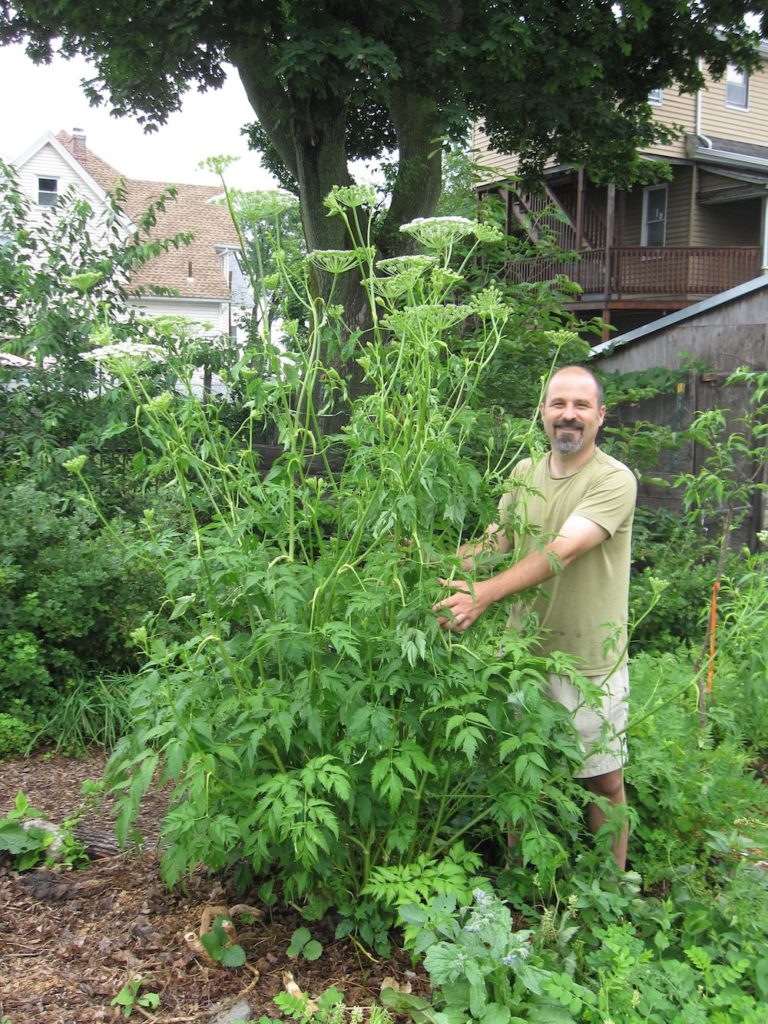
Edibles in the January Bulb Garden at the Gothenburg Botanics
On my way north from Vienna to Oslo, I found myself unexpectedly with a 4 hour wait in Gothenburg in Sweden, and there was no hesitation to visit one of the great botanical gardens. I had no idea what there would be to see in January but with the mild winter I was surprised how much there was to see. Here are a collection of wierd and wonderful edibles in the unique bulb house!
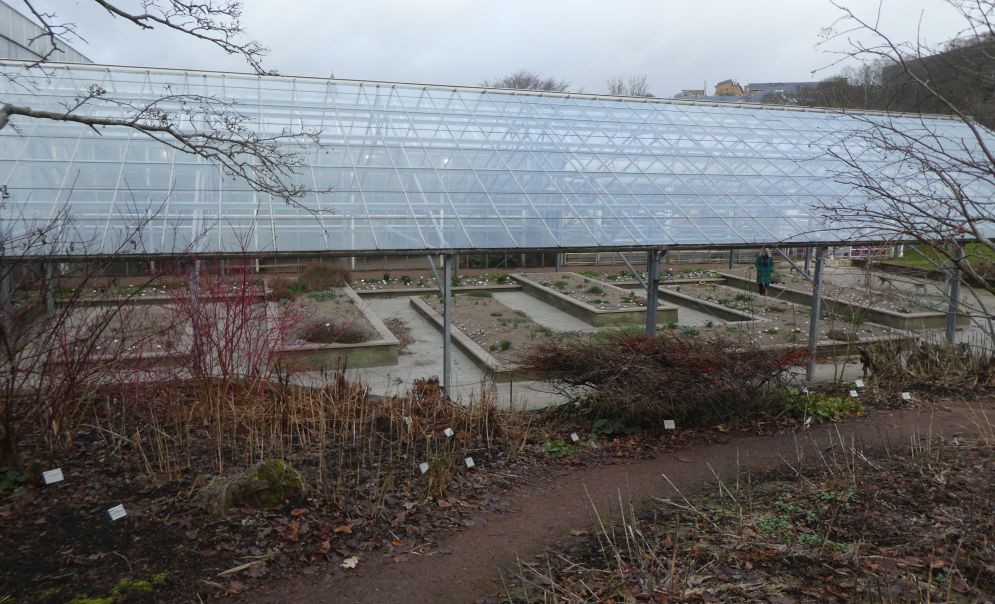
The bulb house is unique with open sides 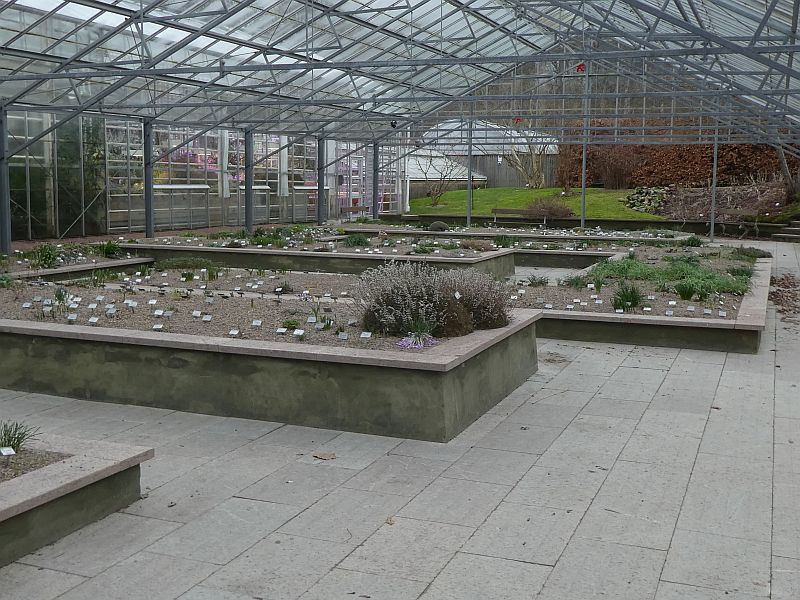

Lomatium canbyi (Canby’s biscuitroot) was used by native americans in the Pacific NW and North California! 
Lomatium canbyi (Canby’s biscuitroot) was used by native americans in the Pacific NW and North California)! 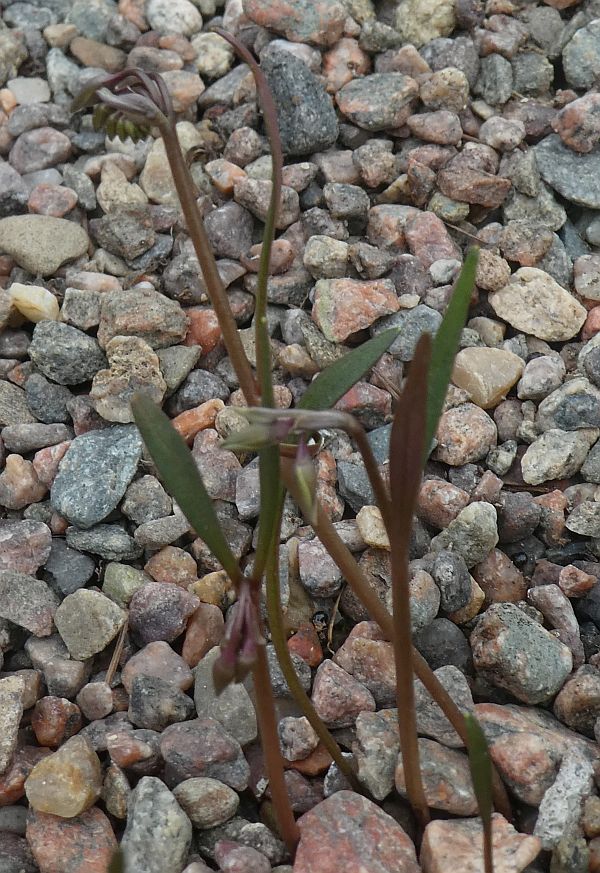
Claytonia rosea (Madrean or Rocky Mountain springbeauty) grows in dry pine and oak woodland in USA 
Viola trinervata (from NW USA) 
Young shoots of Cymopterus planosus (Rocky Mountain springparsley); Cymopterus is a genus of native american food plants. I grow C. sessiliflorus, failed with planosus 
Scorzonera spp. 
Lomatium nudicaule (pestle parsnip) is also used by native americans and is one of the easiest to grow. 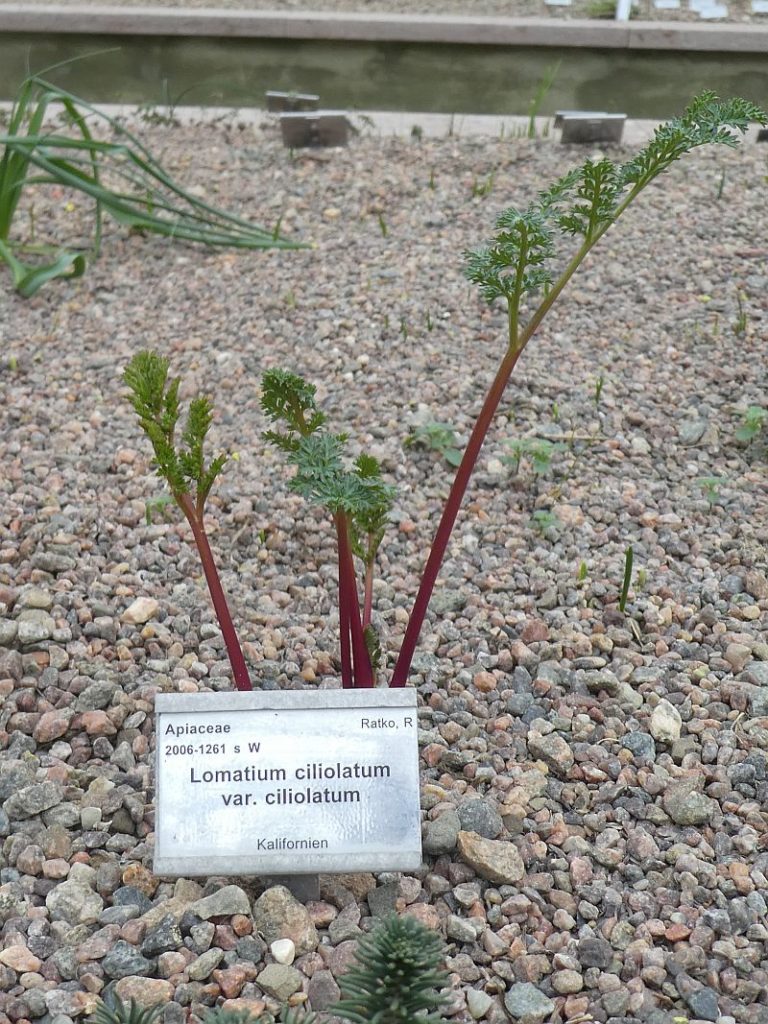
Lomatium ciliolatum (Yolla Bolly biscuitroot) is endemic to California 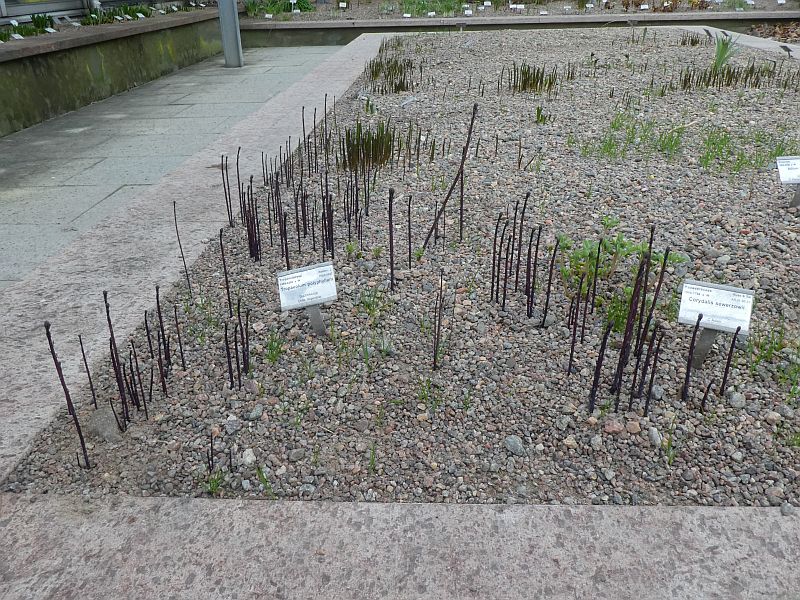
Tropaeolum polyphyllum (soldadito grande de la cordillera; meaning great soldier of the mountains) 
Tropaeolum polyphyllum 
Megacarpaea gigantea in the Brassicaceae is in a genus with at least two important edible plants. This one is from Central Asia. 
Crocus kotschyanus is one of several species where the corms are used for food (in Turkey)
Sprouts in the cellar
A much warmer winter than normal and I returned home to well developed blanched dandelion shoots in the cellar together with horseradish shoots and the sweet cicely shoots (Myrrhis odorata) had also germinated en masse!
This post shows the dandelion roots being dug and planted at the end of November: http://www.edimentals.com/blog/?p=23997

Dandelion 
Horseradish 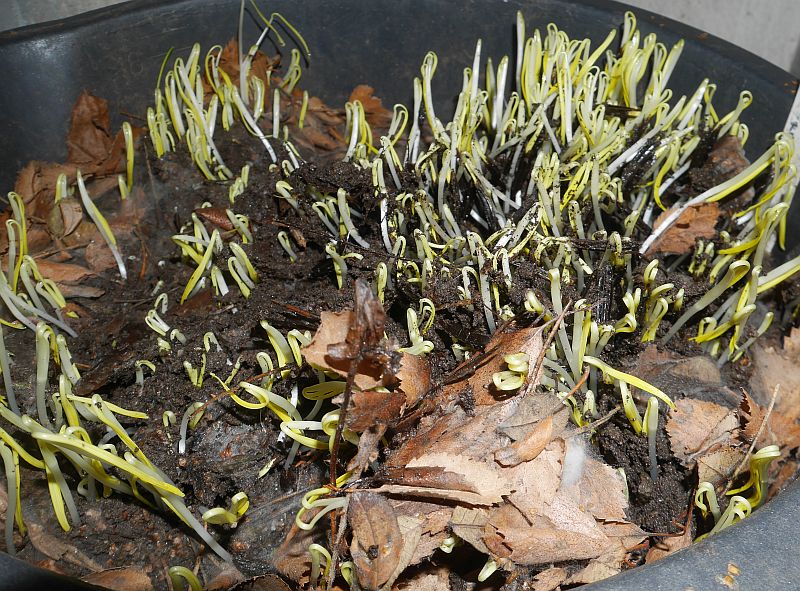
Myrrhis odorata (sweet cicely)
The first winter shoots
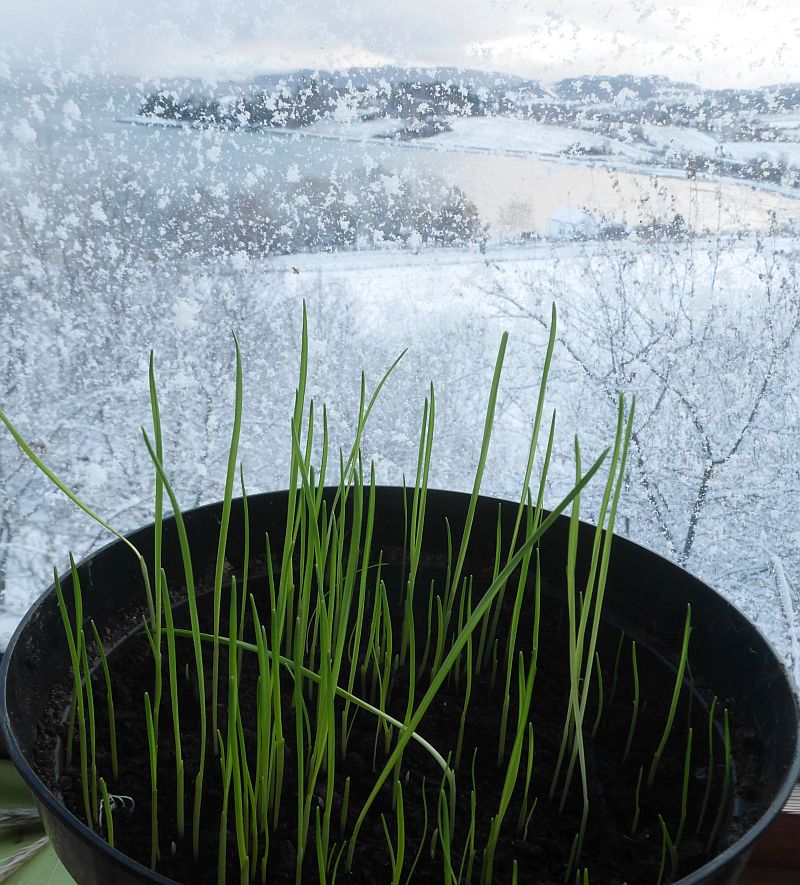
Horseradish harvest


Preparing dandelions for forcing
Just:
1. Dig up the roots
2. Remove (and eat) any green leaves
3. Plant the roots in soil up to the crown and then cover the crowns in a couple of centimetres of clean sand (I use buckets)
4. Store in the coolest place possible to keep them dormant (it could also be outside if you don’t have a root cellar)
5. Move to a warmer place ( a cool room works well) a couple of weeks before you need the shoots (keep dark if you want delicious blanched shoots)
(This is the same method you can use for forcing chicory, but to my mind dandelions are even tastier and they sow themselves….and all you have to do is NOT to weed and harvest instead!)
Snow harvest
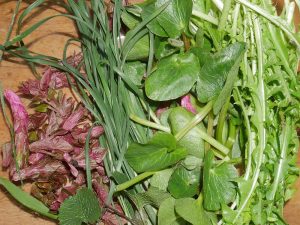
Hablitzia tamnoides, Allium carinatum, Ranunculus ficaria var chrysocephalus (lesser celandine / vårkål), Alliaria petiolata (hedge garlic / løkurt) and (forced inside) dandelions (løvetann)

